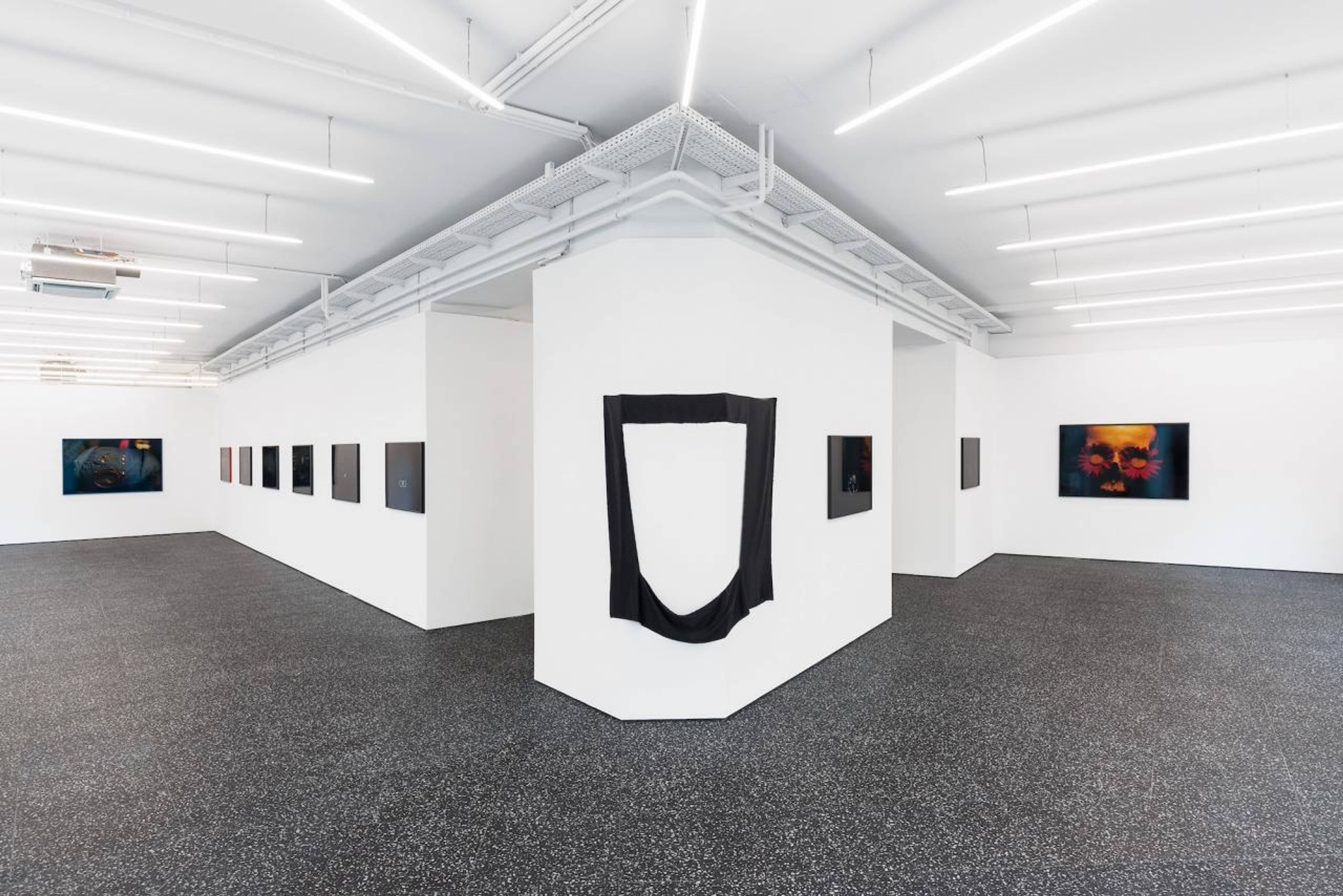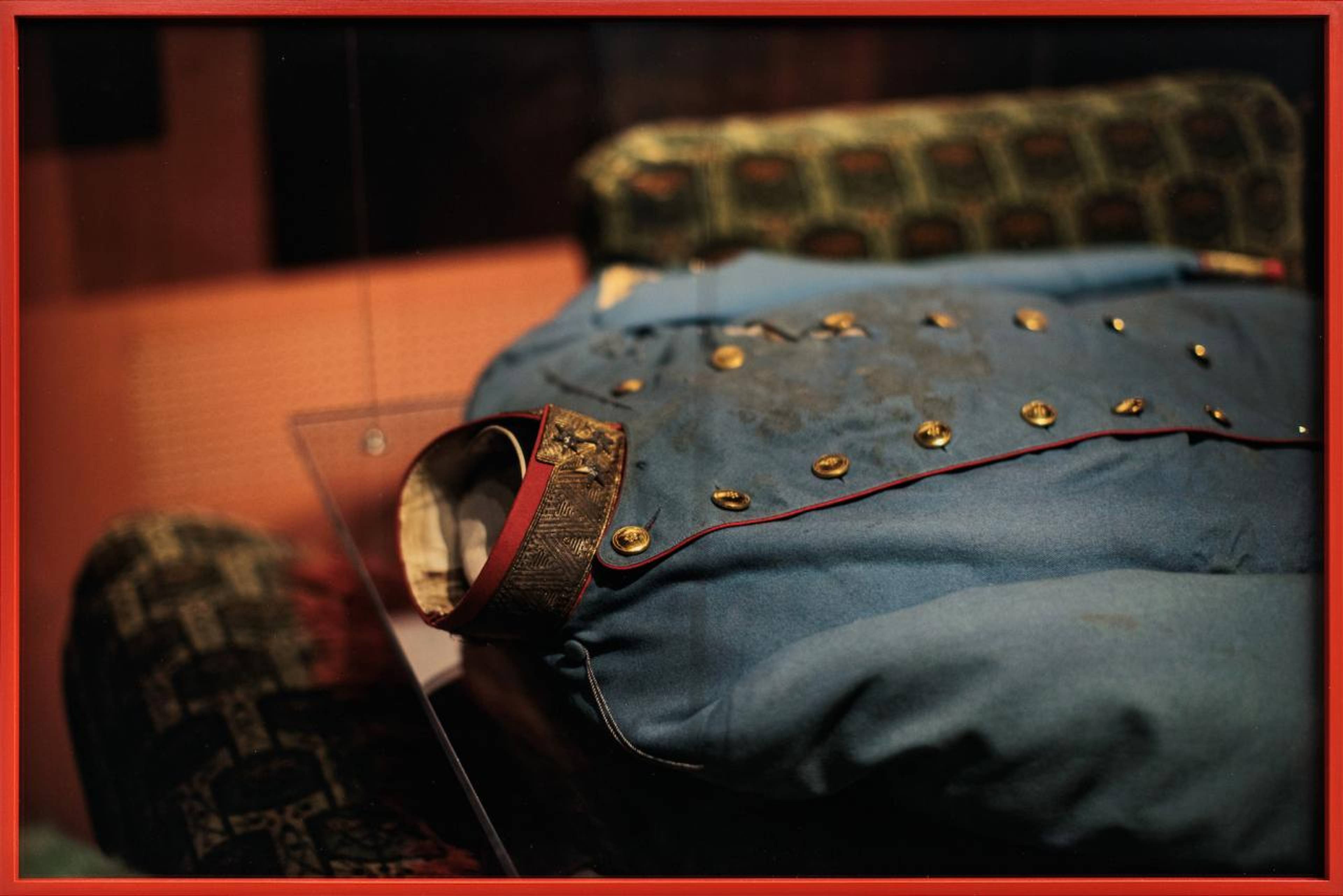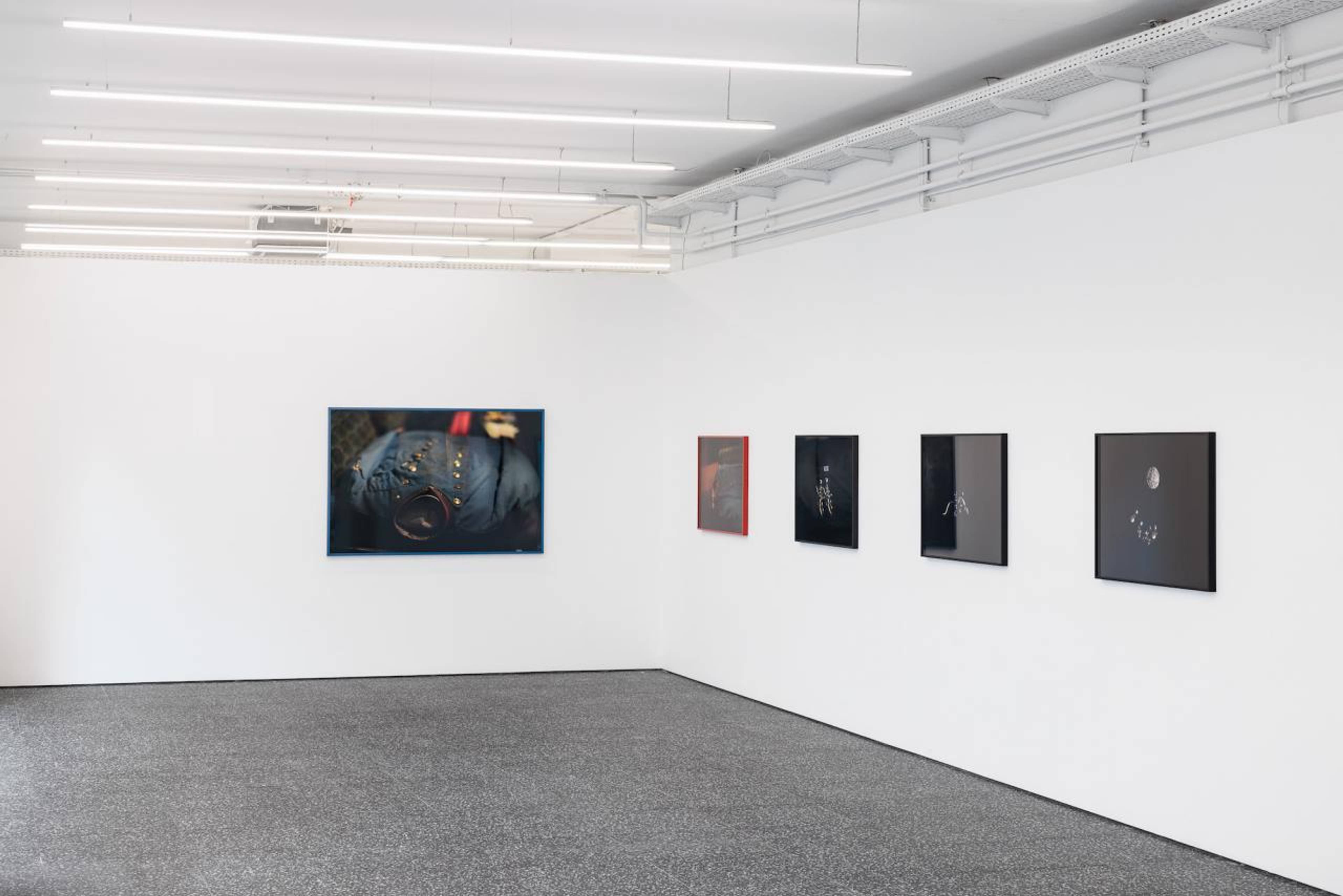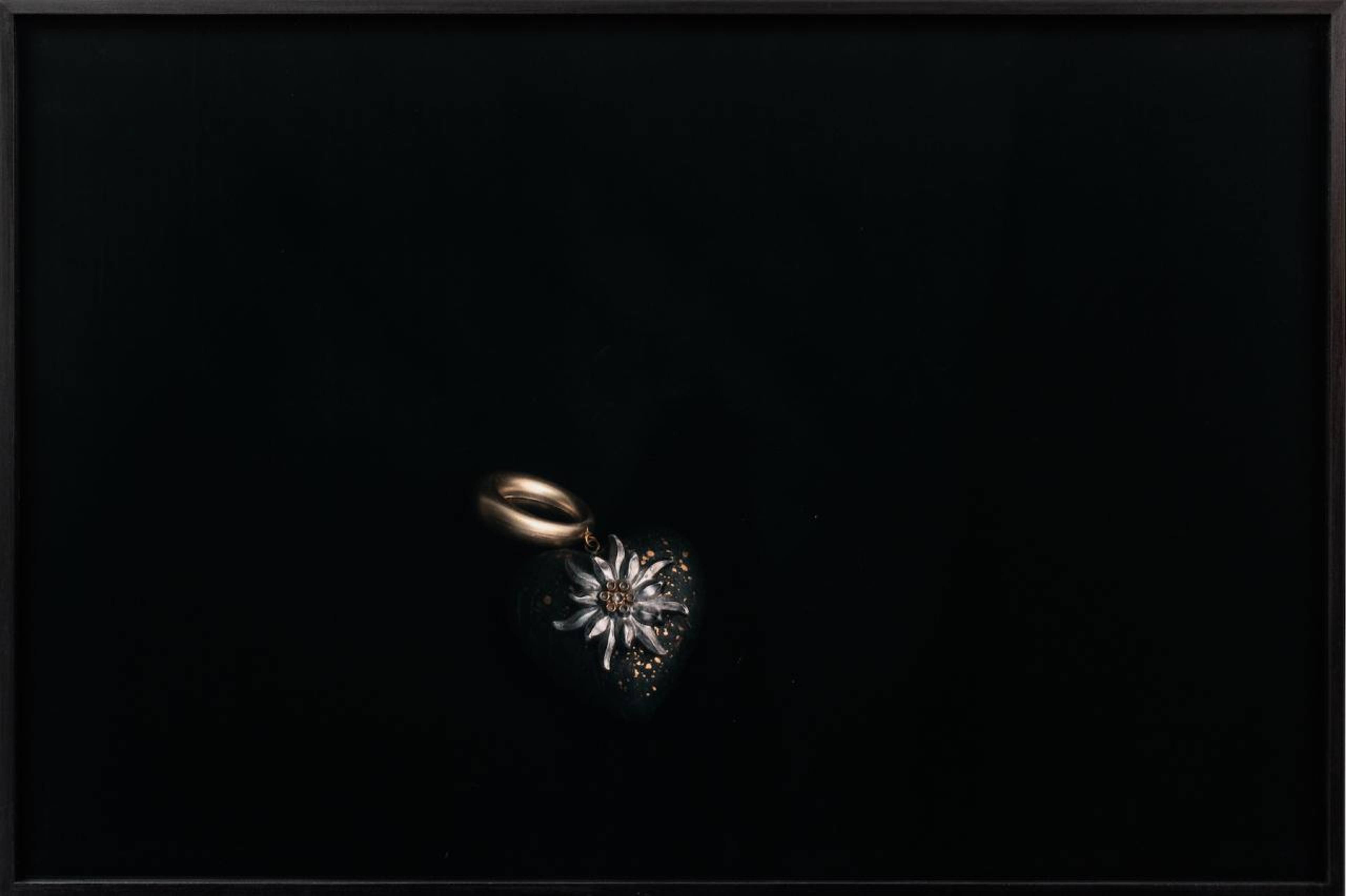Natalija Paunić: Anna-Sophie, you and I once discussed whether an artist’s personality and actions should affect the way we display or perceive their work, or whether in some cases it should be displayed at all. I’ve been thinking, inspired by William Blake, about experience and language as violence: not so much towards an object, but against our ability tosee things once they had already been narrated. There’s a certain insistence on verbal rigor, which I ascribe to some new, collaboratively constructed impossibility of innocence. That word came to me when I was thinking about the Balenciaga scandal last year, when I realized that innocence and love are just those things that are still never brought into question, even if they’re often the first ones to be devalued in formal affairs. Shouldn’t there be space for the innocence of the object?
Your latest show at Layr had no exhibition text and, during our last phone call, you deemed the title, “Mode und Tod,” telling enough.
Anna-Sophie Berger: I think I am not interested in permanence as a formal trait. I consider contingency to be a fact. So the point is not to purge the artwork of mediation in order to arrive at greater purity or a more autonomous object, but to consider the relative demand for legibility of the institution, the art world, the audience. It’s a negotiation of how much I want to be understood versus how much I want to be obstinate.
You mention a certain contemporary desire of the institution – a gallery, a collector, a political party – demanding of art certain qualities usually communicated through complementary text, a concrete interpretation of form, a stable ethical meaning. Until fairly recently, this demand on the artwork included defining itself within a framework of political agency, by referring to political themes, or even worse, claiming the artwork itself effected change.
I don’t think it’s wrong to assume that artworks affect change or can be tied up with political action. I’m just extremely critical of bad faith in artistic production, presentation, and mediation. I think artworks do things, but it’sthe vested interests of those who buy the art that I’d like to refuse to supply with packaged deals of good meaning.
View of “Mode und Tod,” Emanuel Layr, Vienna, 2023. Courtesy: the artist and Emanuel Layr, Vienna
NP: I’d like to believe that I’m not trying to explain art when I write, but to face it with something external and see what happens. However, this raises questions about imposing stories onto an artwork’s “authentic” properties – so I’d say that writing is widely perceived as dominant over the work; projecting; harmful.
On the other hand, words are used so much that they drift away from actual meaning. There’s some reference to poststructuralism, but I actually look at this issue at a practical level. I think we lose nuances in formalities and the ADHD-adapted speed at which we communicate today, also due to the legacy of cancelculture: everyone is asked to voice an opinion and pick a side, violently, as if there were only two sides to life.
In “Mode und Tod,” the only thing written is the work titles.
ASB: First, the show title, “Mode und Tod,” is taken from the Italian writer Giacomo Leopardi’s “Dialogo della Moda e della Morte”(Operette Morali, 1824). He was a 19th-century poet who wrote this book of moral fables where allegories of abstract nouns and characters enter into dialogue, e.g. Hercules and Atlas, Nature and a Soul, and finally Fashion and Death. It casts fashion as a fleeting phenomenon that tortures people into having to conform to its speed. I liked it because it had a central image of two women – in Italian it’s laModa and laMorte, both feminine – and they refer to each other as sisters. Fashion running after Death calls out, “Stay! For the love you bear to the seven cardinal sins, stop a moment and look at me. […] I am Fashion, your sister” and “Do you not remember we are both born of Decay?” Death: “But standing still paralyzes me, so if you can, let us run; only you must not creep, because I go at a great pace.”
The show features the perverse pairing of the death of an heir to a throne with, through his uniform, fashion – something colloquially linked to superficiality, fraud, deception, and money.
Iconographically it also hints at a sort of pictorial populism through the use of familiar symbols such as the skull, the uniform, the edelweiss or angels.
Anna-Sophie Berger, Archduke Franz Ferdinand’s Uniform at the Museum of Military History Vienna, 2023, c-print, 101.5 × 67.5 cm
NP: At Layr, when I came in, people were mostly in one part of the room, so the only thing I saw were the two photographs in the back. Once I realized the suit on view belonged to Franz Ferdinand, I googled him. We both know that art can be seen as political even if it’s not, but in a sense, this was educational.
One thing I read was that, when he was shot, they couldn’t take his clothes off because he was injured in a certain way, which, to me, was an important revelation.
ASB: There’s a video on the website of the Austrian Army Museum, which owns the suit, explaining the assassination in forensic detail. Blood dripped down far from the bullet hole on the garment, because the jacket was so tightly fitted near the neck. The bullet hole is visible in the center front of the uniform as it’s displayed in the museum; it’s also pointed out in the video. I found this interesting: this tiny bullet hole as prime evidence for an event we relate to so immensely as the alleged catalyst of the First World War. This forensic obsession over details emerges even more clearly in the assassination of John F. Kennedy and its mediation through cinema. In Oliver Stone’s JFK (1991), half the conversations center on bullets, angles, shells and entry wounds.
I’m interested in this visual fetishism for marginal details that are imbued with great importance for the layperson: the bullet hole as portal to historic truth. The frantic and at times paranoid forensic interest is psychologically tied to recuperating the damage done to state power when a ruler is murdered. It’s like a mythological wound, the desire to display that object in a museum is morbid. And it is reactionary: as W.E.B. Du Bois rightfully insists, the interests of the parties involved in the First World War were“not surely in the death of Ferdinand the Warlike; but in the possession of land overseas, in the right to colonies, in the chance to levy endless tribute on the darker world.”
NP: Being Serbian and learning about this – probably in a very different way from you – I never considered someone might actually be preserving and displaying this suit. I was so moved when I realized what it was. It felt brilliantly absurd that Franz Ferdinand died not only because of a controversial Bosnian-Serb figure from my school books, but also from the way his jacket was constructed – from fashion. I also noticed how you took those photos and how the suit is presented, lying down. You don’t see it as displayed, say, in a shop window. It resembles a lying shell of a body.
View of “Mode und Tod,” Emanuel Layr, Vienna, 2023. Courtesy: the artist and Emanuel Layr, Vienna
ASB: I wanted to construct a group of images that could function with and without context. But I wasn’t ready to completely remove information so one of the two photographs of the suit contains full information about it (Archduke Franz Ferdinand’s Uniform at the Museum of Military History Vienna, 2023)
NP: And the other is called The Most Past (2023)?
ASB: Yes, like Walter Benjamin’s concept of jumping into the past and jerking something rather violently into the present, creating a new situation.
NP: Your dad was at the show’s opening. The title of a work mentions his name (Untitled, Alexander Berger 1979, 2023).
ASB: Yes, Alexander Berger.
NP: Right. The skull and flowers in the photograph, and the name Berger, gave the impression that this would be your ancestor. The other photos in the show include jewelry, which is also part of your family’s heritage. It seemed like an exploration into your own origin, something new, because I never thought about your work in this very personal “Oh, I’m Austrian” way.
ASB: I like what you said about the show’s morbidity. I don’t know how conscious I was of it. I knew I was going to exhibit three groups of objects that had ceased to be, or the reality of their being in the world had passed: a jewelry factory that closed, a monarchy that ended, and the youth of a man that had passed (my father’s). That image of a crypt where ancestor’s remains are stored complements the image of the empty suit without a head and the skull without a body.
NP: What was startling here was this “national” element. This is not to say your work is about nationalism or anything like that, just that the connotation was surprising. The Austrian element seems to come up in hindsight. And it seems important, or at least intentional, as the titles point to it.
To speak about the bruises of a city without the authenticity of life shared among them is voyeuristic.
ASB: I think it’s relevant. I feel oftentimes my shows in Austria are better because of the context of my being a naturalized citizen, the privileges etc. I have a horror of the traveling artist-citizen-of-the-world hopping from town to town doing research for a critique that’s adaptable to any setting. That doesn’t mean we can’t show art elsewhere. We can make our half-informedness or our bias transparent. Which was the topic of my show in Belgrade that you curated (“Time,” 2019), about the doubtfulness of knowing what one can or should speak about or who one is speaking to.
NP: In the exhibition text for that show you mention: “To speak about the bruises of a city without the authenticity of life shared among them is voyeuristic. But pointing out humbly one’s own radical difference through privilege is no better. It leaves everyone uncomfortable.”
Your shows always gave me the impression of someone who knows how to address privilege. With “Mode und Tod,” Franz Ferdinand was Austrian, but his destiny had repercussions for the entire world. Using his death-suit, alongside memorabilia of purely personal value, is a very interesting, understated way to approach power and privilege.
Anna-Sophie Berger, Engelohrhänger 1995, 2023, c-print, 101.5 x 67.5 cm
ASB: I want to be careful not to cast myself here as the ideal solution to that which I criticize. But it’s again about this idea of bad faith, of being caught making a statement in the full knowledge of its falsity.
NP: There’s one piece in the show which is not a photograph, The First Time of Young Love (2023).
ASB: “First time of young love” is what Marx calls that moment in a factory’s existence when, through the introduction of a novel technology that is not yet universally owned, for a brief moment extra surplus can be made. Marx deploys this romantic, visceral terminology of love. I envisioned my parents’ jewelry factory bankruptcy as the flip image: “the last time of old love,” both technologically – my parents described their machines as looking like from a museum – and socially – my grandparents devoted their lives to an industry that now was literally dead in central Europe.
The piece is made from satin silk from which a rectangular shape is ripped. Visually it showcases a vestige, akin to industrial excess; the cut-out might be a product. But as a symbolical leftover, the piece became a cipher to be filled with content and deployed at will.
There was a column that was messing up the spacing of the wall works – an architectural feature I could not hang a photograph on. So it felt quite logical and natural to make a textile work as a pliable solution that can wrap around a corner, and to insert it into this space.
NP: This makes sense because the piece does look like a placeholder of sorts. The fact that textile stands in for words makes the dichotomy visible in the show. However, I saw that there’s this beautiful “Made in Italy” detail written on the piece too. And something else in Italian.
ASB: Yeah. I think it says pura seta, pure silk.
NP: And it’s the only text on display. It seems to have this reference to death, perhaps because of the color and the solemn way it’s displayed in the corner. It could be my personal reading too – I had some love made in Italy, and it died, to put it poetically.
ASB: I’m drawn to fabrics for their popular legibility, the intuitive understanding of their conventions. Without studying silk, we have an innate capacity to decode textile. Children have it too. As I said earlier, this is something I’m very drawn to in my art making: I want to be able to trust to leave you alone with it.
___
“Mode und Tod”
Emanuel Layr, Vienna
9 Feb – 25 Mar 2023






